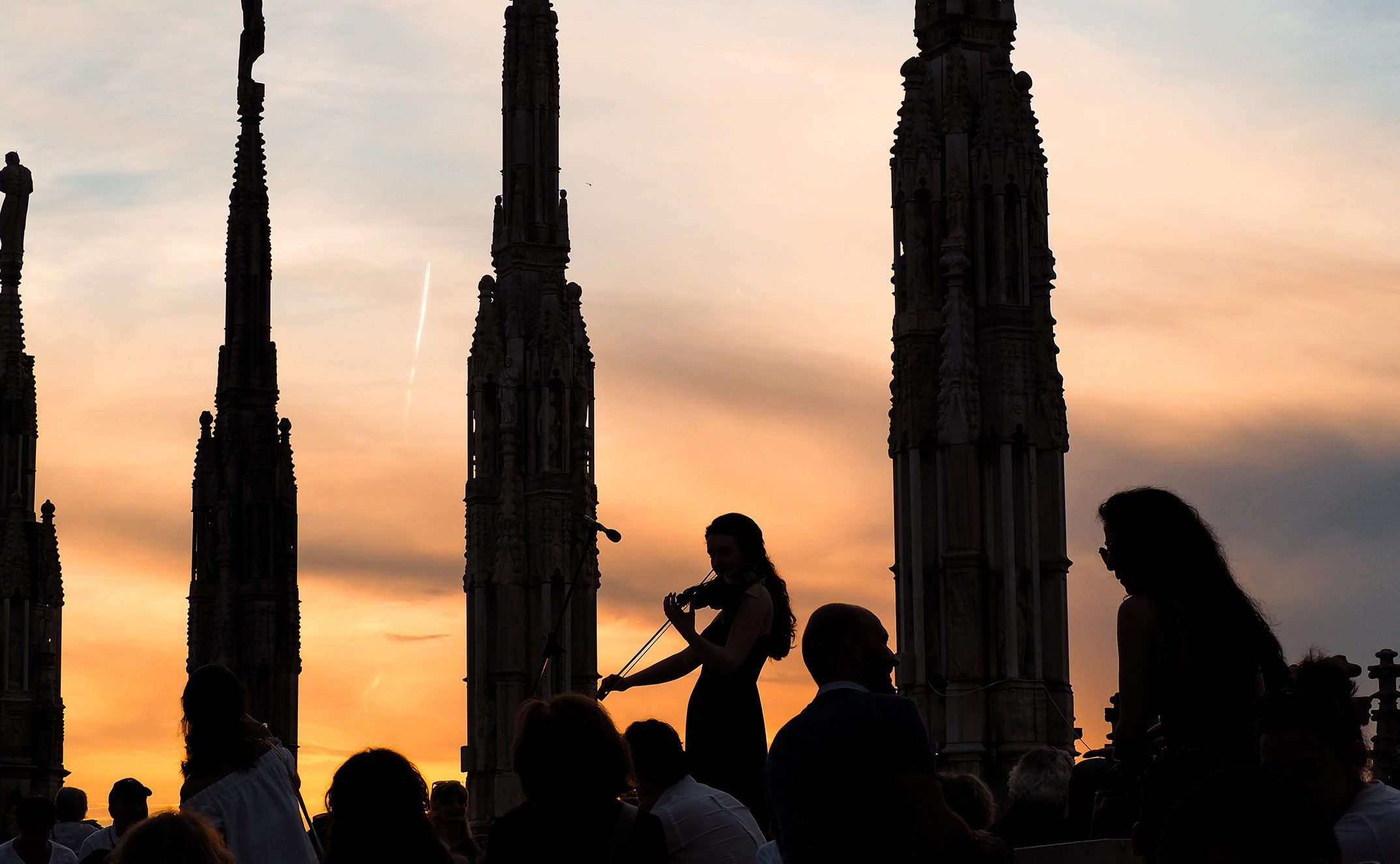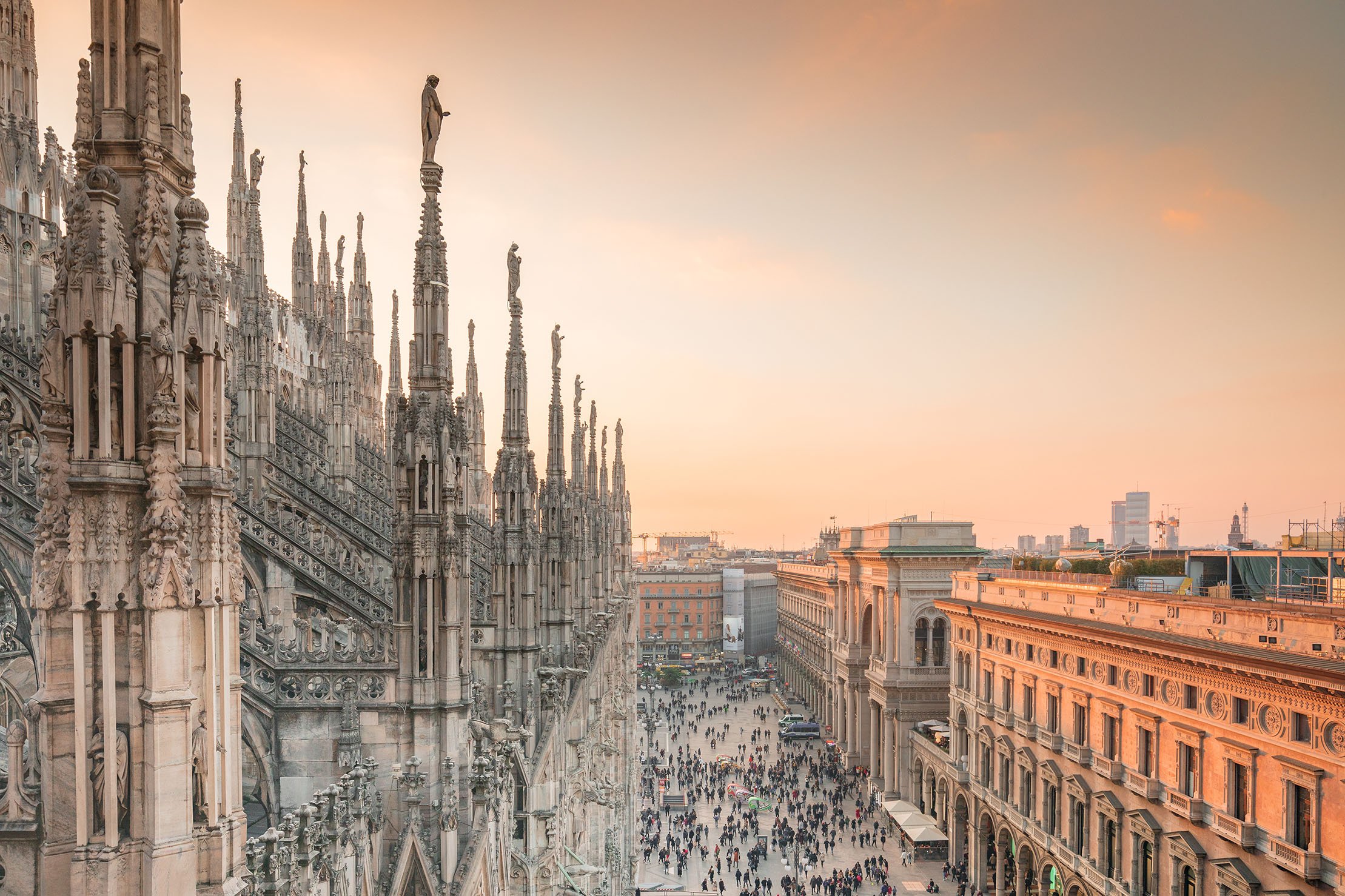This statue was the result of an art prize competition held by the Veneranda Fabbrica del Duomo di Milano in 1952. Subdivided into different categories, it also included the decoration of some spires whose statues were especially worn, including that of Saint Hermes. One of the many entries submitted was that of a young woman of Sicilian origins who had studied at the Academy of Fine Arts of Brera. Today the artist is still alive, but cannot see the world around her due to her unfortunate destiny. She imagined a Saint Hermes who wears a bishop’s mitre and is engaged in a very delicate gesture: he is holding a dove, a symbol for the Holy Ghost, and strokes it gently. However, it seems that none of the Hermeses that became saints used to be bishops. The most famous amongst them was a Rome’s prefect of Greek origins who, according to an apocryphal Passion, was arrested by order of emperor Trajan and decapitated because he was a Christian. The Passion tells us that his body was buried in the outskirts or Rome by his sister Teodora, along the ancient via Salaria, on the fifth day before the Kalends of September (28 August). Another document, the Depositio Martyrum, mentions a certain Hermes being buried in Bassilla cemetery, along the ancient via Salaria, on the same date. In 1934, an archaeological excavation in Bassilla cemetery unearthed two marble fragments with a poem’s inscription eulogising a nameless martyr of Greek origins. In 1940, a third verse of the poem was discovered, which, however did not reveal the name of the saint but only that of its author: Damasus. It was then supposed that the tomb on which the epigraph was found was Hermes’s and that the verses were part of the poem that Damasus dedicated to the saint. This hypothesis was confirmed by other archaeological finds of architectural structures that demonstrated the presence of a basilica built on the saint’s tomb and bore the inscriptions “HERME” and “INHERENS” on their facade. Every doubt was dispelled. The Liber Pontificalis, moreover, tells us that the basilica was built during the pontificate of Pope Pelagius I (579-590) and the worship of Saint Hermes became rather widespread in various Italian cities from then on. However, the absence of references in the poem’s text, coupled with the dating of Bassilla cemetery (third century) highlighted how the Passion that stated that Hermes was a prefect under Trajan was wrong and there is no clue about Hermes being a bishop. A Hermes who was also a bishop did exist, in Milan, although he was never canonised. He is Ermete Stampa, also known as Hermes Stampa, who was consecrated in Milan in 1525, a year before his death. He was the brother of Massimiliano Stampa, a commander under Charles V and the uncle of Marianna de Leyva, whom Manzoni immortalised as the “nun of Monza”. It is difficult to understand what were the sources of inspiration for the young artist that won the prize in 1952. Maybe the absence of certain evidence about the martyr enabled her to imagine him as a bishop, given he had such an imposing tomb. The most striking thing about the statue it the saint’s gesture: whilst all other statues either look to the horizon or seem lost in thought, he focuses on the small dove in his hands: white and light – a symbol of peace, of the Holy Ghost and also of the soul. Fragile and delicate but also shining and ready to take flight, just like its namesake, the pagan goddess Columba (the Italian for “dove” is “colomba”) was able to do.
SAINT HERMES
Patron Saint: Patron Saint of some cities of Central Italy, invoked against mental illness





 Tiburio
Tiburio

